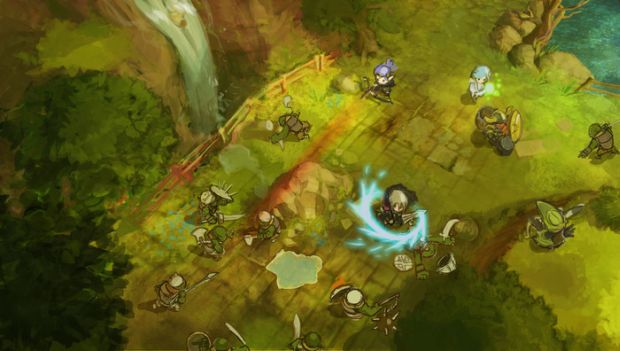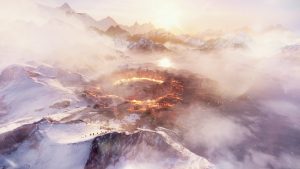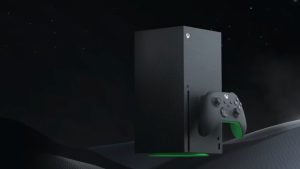
Until perhaps early last year, Japanese RPGs were facing a bit of a downtrend. Final Fantasy no longer commanded the same respect it once did, though the resulting decline took a few years to arrive. However, this hasn’t deterred some new developers like Creative Intelligence Arts Inc., made up of an all-star team of developers, artistes and designers who brought Project Phoenix to Kickstarter. Successfully funded within no time at all, earning 10 times as much as its original funding goal, Phoenix will look to usher in amazing story-telling, an original fantasy setting and compelling gameplay mechanics that were a hallmark of several RPG classics of the past.
GamingBolt recently had a chance to speak to director Hiroaki Yura about Project Phoenix, especially whether it would take advantage of PlayStation 4-specific features, its setting and his thoughts on the choice of PS Vita and PS4 for the game’s console release. 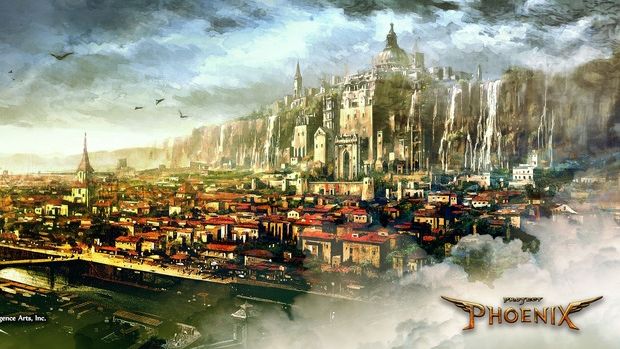
"Project Phoenix started as a humble Tower Defense game aimed at funding another game we have planned at the moment, however as our group grew in staffing, we started getting interest in “doing things to the best of our abilities”."
Ravi Sinha: Let’s get this out of the way: For being a squad based RTS JRPG, did you ever envision that Project Phoenix would have the level of success from its Kickstarter campaign that it did?
Hiroaki Yura: We’re as pleasantly surprised as most people are. Although we had had a few other Kickstarter projects that we looked towards as benchmarks, the reception that Project Phoenix received went beyond expectations. For that, we’d definitely like to thank all of our backers for making this vision a reality and we’ll be hard at work bringing Project Phoenix to life!
Ravi Sinha: How did the idea come about for Project Phoenix? How was Creative Intelligence Arts Inc. formed and how did you finally decide on Kickstarter as the primary mode for funding?
Hiroaki Yura: Project Phoenix started as a humble Tower Defense game aimed at funding another game we have planned at the moment, however as our group grew in staffing, we started getting interest in “doing things to the best of our abilities”. As we threw ideas around, I always loved RPGs and RTS and thought it’d be brilliant if we can put those two together.
CIA is a music company, it is being used as a company currently to host the Kickstarter service, however, we are planning to make a new game studio in the future before release. Kickstarter, well, we always had our aims for Kickstarter supporters since people who use the service often would probably love what we were thinking of, so it wasn’t a decision per say, it was one of earliest goals.
Ravi Sinha: Project Phoenix boasts an amazing level of professional talent. How did each team member bring their own level of expertise to the project in such a cohesive manner, despite some wildly varying backgrounds (with some having worked on titles such as Halo 4 and Crysis 3)?
Hiroaki Yura: In building the development team for Project Phoenix, my chief concern was that all of the pieces would fit together smoothly. I needed people who I knew had the skills I was looking for, who would be professional, and, most importantly good to work with. Because of that, many of the people on Project Phoenix are either personal friends of mine, people I’ve worked with before, or are friends of friends who are enthusiastic and passionate about games. Many of them are among the most respected people in their fields and are known for their ability to deliver solid work products.
"The game takes place on a world called Azuregard, which is a high-fantasy realm and is home to various human kingdoms as well as elves, dwarves, orcs, and other races which include those not native to the Western high fantasy tradition."
Ravi Sinha: You believe that Project Phoenix will bring back JRPGs to their roots but will also move forward along with the advancing technology. How are you planning to do that in Project Phoenix?
Hiroaki Yura: Though the idea of bringing JRPGs back to its roots in the face of advancing technology might seem to be at odds, it’s more easily understood if we stress aspects of JRPGs that have drawn people to the genre in the first place. By that, we mean game elements like compelling narratives, memorable characters, and an enjoyable, engaging combat system.
It’s the battle system that allows us to try new things and with technology moving forward, we now have the capability to add more environmental interactivity compared to many JRPGs that are out on the market. The result is that battles will become more dynamic without bogging the player down with too many options.
Ravi Sinha: Let’s talk about the story. What is the setting of Project Phoenix? How are you making sure that the story will play a pivotal role in making the game addictive?
Hiroaki Yura: The game takes place on a world called Azuregard, which is a high-fantasy realm and is home to various human kingdoms as well as elves, dwarves, orcs, and other races which include those not native to the Western high fantasy tradition. So even though the setting is solid, what will make Project Phoenix successful and engaging will be the way in which players can identify with the game’s cast of characters.
Yoko Enoki, our scenario writer, has been pivotal in this regard. The characters that she has created for Project Phoenix are down to earth, each with their own quirks. But they also possess the depth that will make them resonate strongly with gamers everywhere.
Ravi Sinha: The game features six playable characters. What kind of skills and special abilities will each of them have?
Hiroaki Yura: Without giving too much away you’ll have characters who function as the battering ram and are capable of creating strategic options like holes in walls to surprise enemies. There’s one character who’s a scout, which gives her good sight range, allowing her to spot enemies and help your team with ambushes. Other character classes that you can expect to see include Templars who are well-trained in both offense and defense, samurai, and stealthy ninja.
Ravi Sinha: Can you talk about the leveling system and how do you plan to make it unique compared to other games in the same genre?
Hiroaki Yura: Leveling will be very similar to other games. You gain stats dependent on your class and skills open up as you progress. We don’t want to make it different because we want to be different; we only want to improve on areas that we think needs improving. That been said, we are thinking of putting grinding to a minimum (unless you are aiming for an endgame approach). 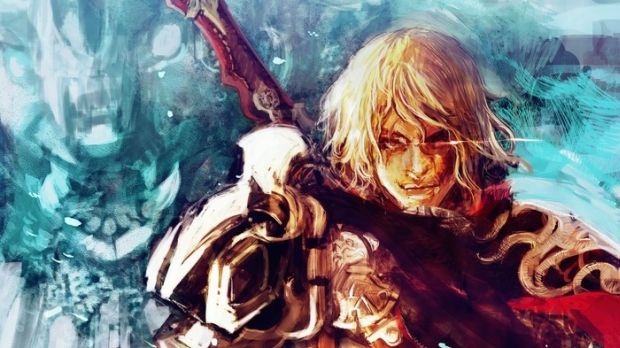
"In terms of map size, the world itself is huge. We’re talking a landmass about as big as Eurasia. With that said, we’ll make sure that traveling around a continent of that size won’t take too long and we’ll be setting places aside for future expansions or sequels to Project Phoenix."
Ravi Sinha: How many hours of gameplay can players expect? Furthermore how big the map is?
Hiroaki Yura: Right now, we’re expecting somewhere in the ballpark of 25-30 hours for people just looking to complete the game, but we’re offering endgame content that will stretch it out to about 60 hours, especially if you’re a hardcore completionist.
In terms of map size, the world itself is huge. We’re talking a landmass about as big as Eurasia. With that said, we’ll make sure that traveling around a continent of that size won’t take too long and we’ll be setting places aside for future expansions or sequels to Project Phoenix.
Ravi Sinha: We know that Phoenix will be heading to the PlayStation 4 and PS Vita but nothing for the Xbox One or Wii U/3DS. Is this for a lack of funding or did the PlayStation platform present more of a comfortable place for the team?
Hiroaki Yura: As far as the Wii U/3DS is concerned, Nintendo traditionally hasn’t been a company that’s widely embraced indie games. Because of that, we weren’t planning on developing for any of Nintendo’s consoles.
With that said, we have been hearing rumblings of a more indie-friendly stance from Nintendo, but only time will tell for sure whether this stance is genuine. As for the Xbox One, we haven’t been approached by Microsoft and because of the support that we would need, we have no current plans in the works for Xbox One development.
Ravi Sinha: How will the PS Vita version differ to the PS4 one?
Hiroaki Yura: We don’t know exactly yet until we get our hands on the dev kits. We don’t want to commit to anything yet.
Ravi Sinha: I was taking a look at your Kickstarter video and you have placed a lot of emphasis on striking visual artwork. How does PlayStation 4’s architecture and 8 GB GDDR5 RAM help make things easier on the graphical side of things? Furthermore, how are you planning to come over the latency issues that GDDR5 brings along with it?
Hiroaki Yura: Striking visual artwork doesn’t mean it is great in terms of how much polygon we can use and how detailed it can be. We will be using great “design” which would work in low polygon models.
Of course, we are making sure that it wouldn’t look disappointing on any next gen consoles or even on the PC, we want a great experience for the gamers. In the end, it wasn’t “striking graphics” that sold Final Fantasy in the first place, and we really want to dig into the roots of what made JRPGs great. 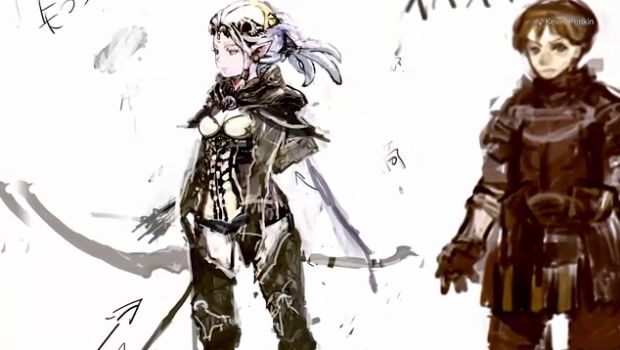
"Cloud computing is a bit of a touchy subject due to DRM issues. We recognize the convenience of having things like saved files to the cloud to make it easier to access your saved games on all your devices. "
Ravi Sinha: Other than the power of the console, are you looking to utilize features such as Cloud computing and the DualShock 4’s touchscreen?
Hiroaki Yura: Cloud computing is a bit of a touchy subject due to DRM issues. We recognize the convenience of having things like saved files to the cloud to make it easier to access your saved games on all your devices. Because this debate is still raging internally within our development team, we will let people know once we’ve come to a decision.
There are no plans for making use of the DualShock’s 4 touchscreen since we want to focus on providing a solid game experience first and foremost. Again, things may change once we get our hands on our PS4 devkits.
Ravi Sinha: Given the recent developments for Valve, what with SteamOS, the Steam Controller and machines, do you feel this will be a significant step forward for games like Project Phoenix which will be heading to the platform? Will it be a viable alternative to consoles such as the PS4 and does it affect development at all at this stage?
Hiroaki Yura: The only benefit we see is that it’ll allow people who want to play Project Phoenix on a controller while using Steam to be able to do so. Controller use isn’t going to magically add functionalities that weren’t already going to be there, so if you prefer pointing and clicking with a mouse or using a controller to navigate around, well that’s entirely up to you. Otherwise, it has no effect on development.
Ravi Sinha: From a development perspective, what is your opinion on the PS4’s GPU? Do you think it will be stand the test of times in the coming years?
Hiroaki Yura: We think it will do the job. Our job is to make sure the gaming experience is great for the gamers and not complain about the hardware our gamers will be using =D
Ravi Sinha: JRPGs today like Lightning Returns: Final Fantasy XIII and Final Fantasy XV are heavily emphasizing a more action oriented approach. You could’ve easily turned Project Phoenix into a hack and slash experience as well. Why go for a squad-based RTS game?
Hiroaki Yura: We simply wanted to go after a battle system that emphasizes team-based combat in a way that is engaging as you have plenty of options at your disposal as you seek to grind out strategic advantages. A hack and slash battle system doesn’t have the kind of experience that we’re looking to bring to Project Phoenix.
Ravi Sinha: Do you have any plans to add second screen support for the PS4 version? [via tablets, PS Vita and mobiles]
Hiroaki Yura: There are currently no plans in place for second screen support.








